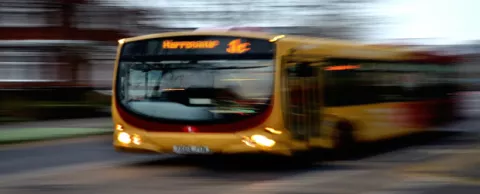
Lille ranks the fourth-largest urban area in France after Paris, Marseilles and Lyon, with 1.1 million citizens living in 85 different communes. Since local authorities in France aren’t responsible for managing an energy policy, the city is turning to its citizens for help, uniting the community to fight one ongoing battle: the greenhouse effect. In addition to developing a wastewater treatment policy generating energy from wastewater, the city has also designed a mobility policy that focuses on the increased use of a clean transportation system. Lille plans to replace 20 to 40 percent of the energy for road transport with biogas-powered vehicles, saving nearly 120,000 tonnes of nitrogen oxide per year. Below, we’ll look at how Lille has spent the last two decades developing one of the continent’s greenest public transportation systems and how the city is continuing to drive forward sustainable change in the mobility sector today.-Bruno De Man
Green fleets for all
Over 25 years ago, Lille started looking at ways to improve air quality and incorporate green energy sources, experimenting with biogas produced by the digestion of sewage sludge to design a unit that ups the methane of raw biogas from 60 to 96 percent. With this sustainable fuel source, the city launched its first gas-powered buses that were not only more reliable than diesel-powered buses (meaning less wear on tyres and fewer breakdowns), they also consumed less fuel, thereby saving money and resources. Now the city collects daily household waste to convert into biomethane, or “green gas,” at a biogas plant in a cycle that helps fuel its fleet of natural gas buses—which operate out of a gas-powered bus depot.
Boasting the largest fleet of natural gas buses in Europe, Lille has managed to reduce exhaust gas emissions enormously, lowering the amount of carbon monoxide produced by 96 percent and reducing nitrogen oxide emissions by 51 percent, in addition to lowering noise levels significantly, since gas-powered buses are 50 percent less noisy than diesel. Not only has the city managed to create greener public transportation, it has also developed a fleet of biogas waste trucks and switched a third of its service fleet over to electric- or gas-powered vehicles. With its fleet of Iveco natural gas-powered buses, Lille is inspiring cities like Graz in Austria and Prague in the Czech Republic to follow suit turning waste into sustainable (and affordable) solutions to power public transport while ensuring a cleaner environment for citizens and visitors alike.



